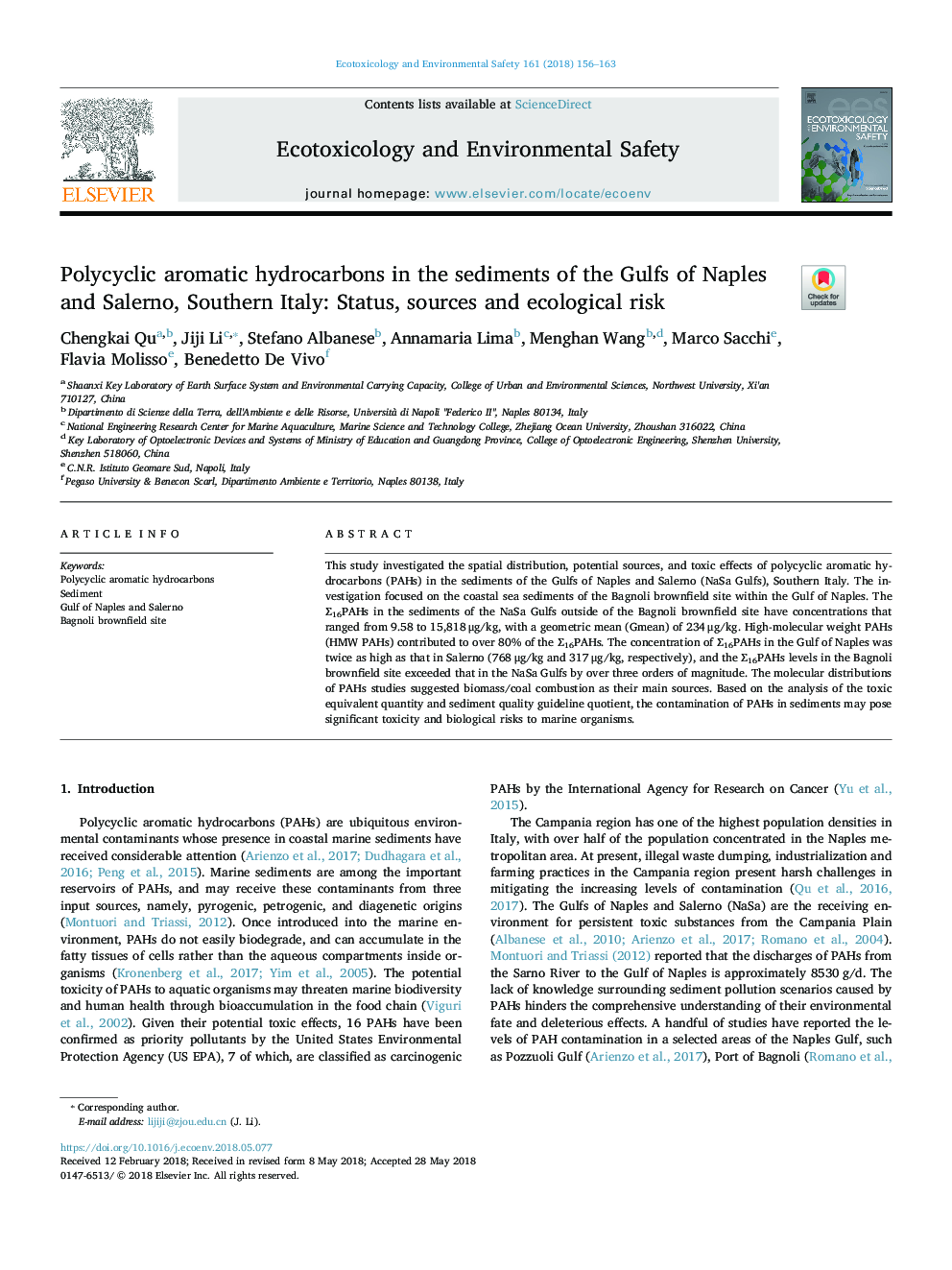| Article ID | Journal | Published Year | Pages | File Type |
|---|---|---|---|---|
| 8853677 | Ecotoxicology and Environmental Safety | 2018 | 8 Pages |
Abstract
This study investigated the spatial distribution, potential sources, and toxic effects of polycyclic aromatic hydrocarbons (PAHs) in the sediments of the Gulfs of Naples and Salerno (NaSa Gulfs), Southern Italy. The investigation focused on the coastal sea sediments of the Bagnoli brownfield site within the Gulf of Naples. The â16PAHs in the sediments of the NaSa Gulfs outside of the Bagnoli brownfield site have concentrations that ranged from 9.58 to 15,818â¯Î¼g/kg, with a geometric mean (Gmean) of 234â¯Î¼g/kg. High-molecular weight PAHs (HMW PAHs) contributed to over 80% of the â16PAHs. The concentration of â16PAHs in the Gulf of Naples was twice as high as that in Salerno (768â¯Î¼g/kg and 317â¯Î¼g/kg, respectively), and the â16PAHs levels in the Bagnoli brownfield site exceeded that in the NaSa Gulfs by over three orders of magnitude. The molecular distributions of PAHs studies suggested biomass/coal combustion as their main sources. Based on the analysis of the toxic equivalent quantity and sediment quality guideline quotient, the contamination of PAHs in sediments may pose significant toxicity and biological risks to marine organisms.
Related Topics
Life Sciences
Environmental Science
Environmental Chemistry
Authors
Chengkai Qu, Jiji Li, Stefano Albanese, Annamaria Lima, Menghan Wang, Marco Sacchi, Flavia Molisso, Benedetto De Vivo,
